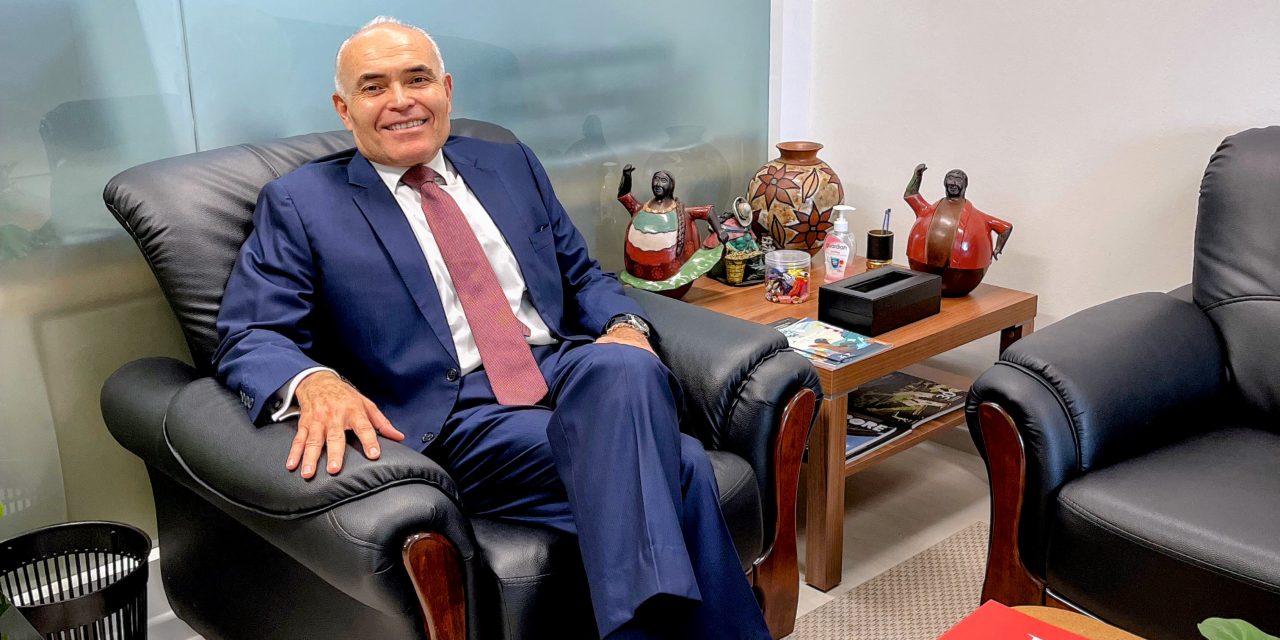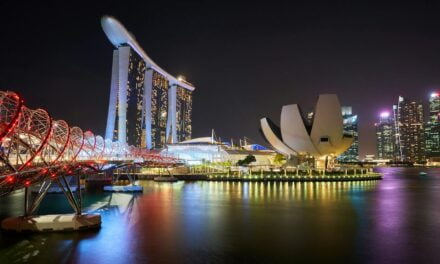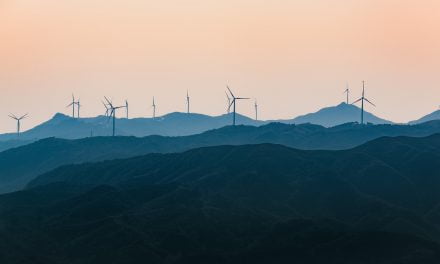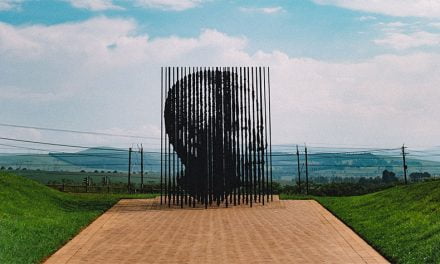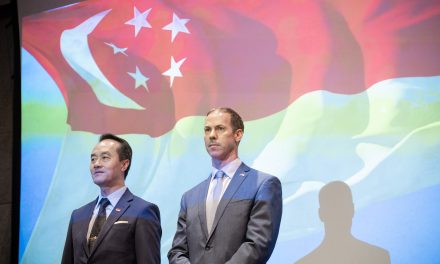Diplomatic Network (Asia) recently sat down with His Excellency Carlos Vasquez Corrales, the ambassador of the Republic of Peru in Singapore as well as the dean of Group of Latin American & the Caribbean, to talk about synergies between the ASEAN region and Latin America & the Caribbean.
Excellency, some of our readers might not be familiar with the Group of Latin American & the Caribbean, or GRULAC, so would you kindly explain what it is and what your duties are as the current dean of the region in Singapore?
GRULAC is an informal group of information exchange and coordination among the ambassadors of Latin American & Caribbean countries in different capitals of the world. In Singapore’s case, 11 resident embassies of the GRULAC region are accredited to the local government. We meet regularly to discuss issues of common interest, coordinate joint activities, or organise special gatherings with Singaporean political, economic, social, or cultural personalities. Our main goals are to put forward to Singaporean authorities and private sector topics of particular relevance for our region as a whole; to make known to Singaporeans any business opportunities in our region and its exceptional cultural diversity and richness; and, in general, to enhance the diplomatic presence of GRULAC countries in Singapore
The most important duty of the dean is to lead and facilitate the agreements and efforts of GRULAC ambassadors, to obtain effective results that collectively benefit our region.
Honourable Dean, the Caribbean, Central & South America seem to be a world apart from the ASEAN region. Do you agree with such a statement and why would you say so? Furthermore, what similarities could you draw from a comparison between the two regions?
Despite the geographical distance, Latin American & Caribbean countries historically have been closely associated with Southeast Asian region. For 250 years, from 1565 to 1815, the maritime route known as the “Manila Galleon”, which connected Hispanic America, through the port of Acapulco in Mexico with the Philippines, encouraged an intense commercial exchange that modified even consumption patterns and supported financial activities in Asia. The land of origin of products such as potatoes, sweet potatoes, peanuts, cocoa, papayas, corn, avocados, tomatoes, and even pineapples, that are widely consumed in Southeast Asia, is the Latin American and Caribbean region. Once they arrived in Asia, mainly through the Manila Galleon, they significantly enriched the daily diet of Asians. Financially speaking, the silver coins minted in Hispanic America since the 16th century and highly demanded in China and other Asian countries, were the key factor that, for centuries, oiled the wheels of the transpacific trade.
On the other hand, the Chinese migration to some Latin American countries in the 19th century was as intense as that which occurred in Southeast Asian nations. Like in Singapore or Malaysia, the migrants, who ended up in Latin America, came mainly from the Southern provinces of China, Guandong, and Fujian, and they were able to create new mixed cultural expressions that combined local and Chinese elements. For example, in my country, Chinese migrants developed a sort of Peruvian-Chinese fusion cuisine that is known as Chifa, like the Peranakan gastronomy here in Singapore.
Even, in natural and climatic terms, Southeast Asia and Latin America have been connected for millennia through the phenomenon of El Niño, which is a hot oceanic current that is periodically born in the Indonesian archipelago and runs across the Pacific Ocean, affecting the coastal areas of Ecuador and Peru in South America. There is great potential for further cooperation in this area between both regions.
And last but not least, rubber, which was one of the most important exports of Southeast Asia in the past, is originally from the Amazon Jungle shared by Brazil, Peru, and other South American countries. The natural forests of both regions harbour great biodiversity.
As you can see, we have many more things in common than one would expect.
Ambassador Vasquez, regardless of the geographical distance between both regions, what are the potential business and trade opportunities that you and your colleagues of GRULAC see in Singapore?
In my opinion, 2022 was the year of Latin America in Singapore. The Pacific Alliance, which is an integration mechanism composed of Chile, Colombia, Mexico, and Peru, signed in January 2022 a free trade agreement with Singapore, called the Pacific Alliance-Singapore Free Trade Agreement; and in July 2022, the Southern Common Market, also known as MERCOSUR, composed of Argentina, Brazil, Paraguay and Uruguay, substantively concluded negotiations with Singapore for a free trade agreement. These eight Latin American countries represent almost 80% of the regional gross domestic product and almost 90% of its exports.
Undoubtedly, through these two agreements, Singaporean companies will benefit from enhanced access to opportunities in more integrated and wider markets characterized by sustained growth and an expanding middle class. This new scenario will facilitate the possibility of developing new and resilient supply chains between Singapore and the Latin American and Caribbean region, amid the growing disruption of the traditional ones, diversifying sources of imports.
For instance, imports of food to Singapore are so important for the city-state. Argentina and Brazil are already one of the main sources of meat for Singapore; salmon and cherries come from Chile; coffee and goldenberries from Colombia; avocados and abalones from Mexico; and blueberries and quinoa from Peru. We need to reinforce the trade of these products and explore new ones.
These agreements will also contribute to enhancing Singaporean investments in Latin America & the Caribbean region and the other way around. The most promising sectors are tourism, agribusiness, and infrastructure and connectivity. There is already a great deal of Singaporean companies doing business in Latin America. For example, Banyan Tree Hotels & Resorts, PSA, Boustead Singapore, Crimson & Logic, Grupo Kaybee, Olam International, Pacific International Lines, and Shopee. Likewise, a growing number of Latin American companies are already established in Singapore or are interested in exploring the city-state as a logistics hub for their business with the rest of Southeast Asia.
Finally, these new agreements pave the way to explore new areas of collaboration. As a result of PASFTA, Singapore and the Pacific Alliance countries have adopted a joint working plan aimed at promoting cooperation in areas such as the digital economy, including fintech and electronic payments; and green energy and sustainability, including low-carbon technologies like hydrogen. Other areas are connectivity and logistics, as well as business and people links.
Excellency, during the month of July, your country Peru commemorates its national day. Please share the historical importance of the date for the Peruvian people from a personal perspective and tell our readers how the embassy is planning to celebrate.
On 28 July in 1821, Peruvian independence was proclaimed in the main square of the city of Lima by the Argentinian General Jose de San Martin, who was leading an army composed of Argentinian, Chilean, and Peruvian soldiers. This was an act of great symbolic power because Lima was the stronghold of colonial power in Peru, and the declaration epitomizes the ideals of Peruvians to reach independence. However, our definitive emancipation was obtained after the Battle of Ayacucho in 1824.
The Embassy of the Republic of Peru in Singapore is organising a reception in one of the most prestigious hotels in Singapore to celebrate our national day and, in August, we are going to present an exhibition in Gardens by the Bay of the unique orchids of the Historic Sanctuary of Machu Picchu, that is one of the most iconic cultural attractions of my country and was recently considered one of the seven wonders of the modern world.
Our media platform, DNA, has recently initiated its activities, catering to foreign diplomats in the ASEAN region. How does His Excellency believe, DNA could contribute to the diplomatic community stationed in Singapore? What is your word of advice for our publication?
I congratulate DNA for the efforts made to promote the activities and initiatives of the Diplomatic Corps in Singapore and the ASEAN region. Today virtual media platforms are efficient tools to spread news and information widely. Here are some activities or initiatives that such a platform could undertake:
- News & information sharing: DNA can serve as a reliable source of news and information related to diplomatic activities, regional developments, policy updates, and cultural events.
- Networking & collaboration: the platform can facilitate networking and collaboration among diplomats in the ASEAN region. It could offer a directory of diplomats, their contact details, and areas of expertise, enabling diplomats to connect with each other and foster professional relationships.
- Event promotion: DNA can team up with the Dean of the Diplomatic Community to help promote diplomatic events, conferences, seminars, and cultural activities taking place in Singapore and the wider region.
- Cultural exchange: DNA can showcase the diverse cultural heritage of diverse countries. It can feature articles, videos and interviews highlighting local traditions, art, cuisine and tourist attractions.
- Enhancing diplomatic training & professional development: DNA can offer information about online courses, webinars and resources aimed at improving skills and knowledge of diplomats.
- Other digital diplomacy initiatives: DNA can explore innovative ways to engage with the wider public. It could feature virtual tours, interactive maps, social media campaigns and charity activities, amplifying the diplomatic community’s outreach efforts.
By offering these activities and initiatives, DNA as a media platform could serve as a valuable resource for foreign diplomats in the ASEAN region.

